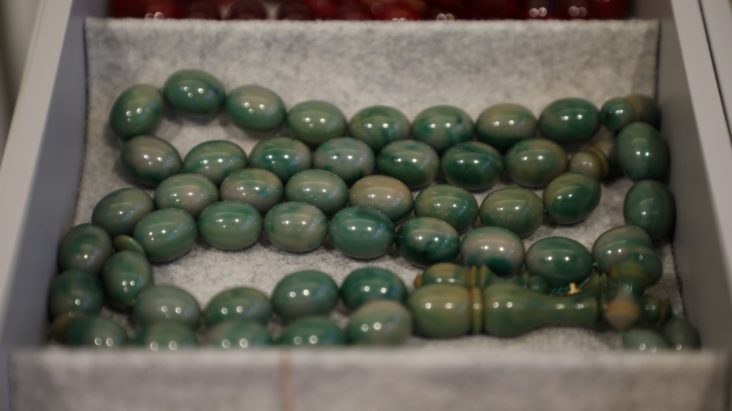Sharjah Heritage Days Showcases Vibrant Varieties Of The Misbaha

From natural and milky-white amber to golden-tinged and multi-hued variants of the stone in orange, clear, cherry, yellow, and more, the Sharjah Rosary stand at the 18th edition of Sharjah Heritage Days (SHD) pays tribute to the beauty of Kahraman, a specific type of amber, that has been used to craft its large collection of misbaha or prayer beads.
At the largest heritage and culture festival in the region, currently on at the Heart of Sharjah until April 10, Sharjah Rosary displays an eclectic collection of prayer beads in different sizes, designs, colours, and materials.
Used by the devout to keep count while saying their daily duaa, the string of prayer beads at Sharjah Rosary have been crafted mainly from hard amber that has undergone oxidisation over time, transforming them from translucent to opaque. Derived from fossilised resin of the pine tree found around the Baltic region – a process that takes millions of years, the beads also age when natural body oils interact with the amber, increasing its value, explains Khaled Ali.
Traditionally made from wood and camel bones, the choice of amber or other precious or decorative stones are reflective of the individual’s personal taste and preferences, he adds. “There are some who prefer lightweight, thick beads while others prefer heavier or bright coloured stones.”
The 33-bead misbaha is the most common type available here, with a few variations in 66 and 99 beads – corresponding to the 99 names of God. “As the beads are touched one by one, Muslims may recite any of the duaa’s, while some use it as a way to relax.”
Dividers separate the beads into sets of 11 in a 33-bead misbaha with a single elongated piece at the end, all held together with cotton or silk cords and decorated with tassels.
It is the quality of workmanship and materials that gives the misbaha its materialistic value, adds Khaled, who holds workshops across the UAE to popularise this unique craft form.



